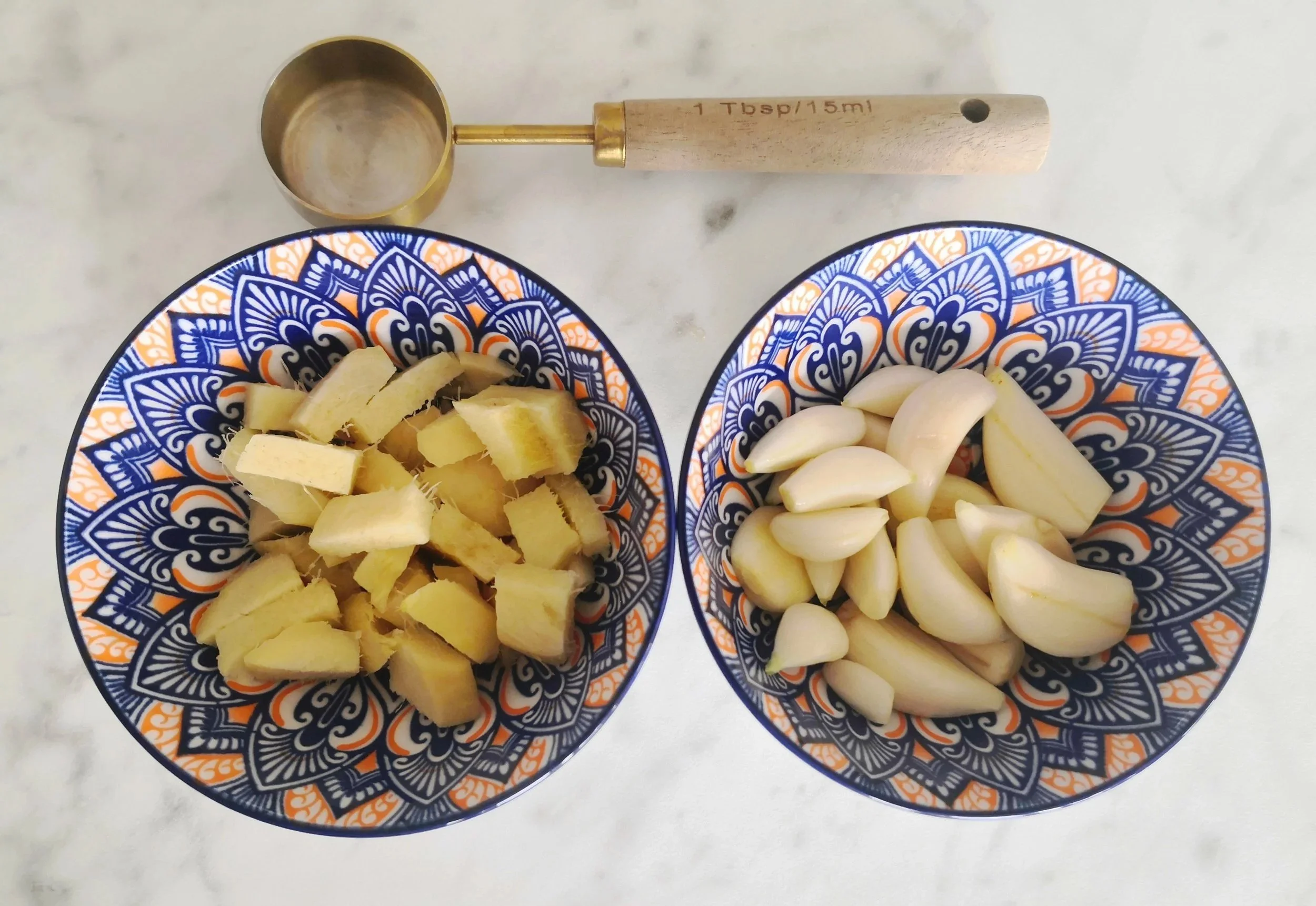Ginger & Garlic – The Cornerstones of Indian Cooking
If you’ve ever cooked Indian food, you’ll know ginger and garlic are absolutely essential. In fact, they’re probably the two most important ingredients in the kitchen. Sometimes they’re used together, other times just one will do, but either way they completely lift a dish. Not only do they add that punchy, savoury flavour, they’re also good for digestion and bring a real depth to curries, kormas, and stir-fries.
Different ways ginger and garlic are used in Indian dishes:
Whole or halved garlic cloves – Common in South Indian fish curries and tamarind-based gravies. The cloves are fried in oil until golden, taking on a subtle sweetness when eaten.
Chopped – Gives a gentler flavour infusion. lovely for quick vegetable stir-fries (what we call poriyal in the South).
Crushed – A bit more intense. You’ll find this in rasam (a tamarind peppery soup), in curries, or even in chutney tempering. Add it early in stir fries for a deep flavour, or right at the end for a sharper kick..
Ginger-garlic paste – The most versatile form and a staple in many North Indian and modern South Indian kitchens. Essential for curries, marinades, stir-fries, and almost all savoury dishes.
How to store:
Although it’s best fresh, but , ginger-garlic paste can be prepared in bulk for convenience. Keeps in the refrigerator for up to 2 weeks.
Freezes well for up to 2 months (Tip: freeze it in ice-cube trays(1tsp or tbsp), then pop the cubes into a bag. That way you’ve got ready-to-go portions whenever you need them.)
Methods for grinding the paste:
Mortar and pestle (stone) – Best for small amounts. A pinch of coarse salt helps break it down and brings out the juices and yeild a smoother paste . This method releases the natural juices, making the paste especially flavourful.
Blender or hand blender – Suitable for larger batches. Use a little water or oil to blend smoothly (some cooks add a pinch of turmeric). Oil extends shelf life but slightly mellows the pungency, it’s really down to taste.
Ginger-to-garlic ratio
The most common ratio is equal amounts of ginger and garlic or 1 part garlic to ¾ part ginger . Rarely is the reverse used, but you can experiment to suit your palate.
A quick tip for cooking with the paste
When you add ginger-garlic paste to hot oil, keep the flame on the lower side—it burns really quickly if you’re not careful. Make sure you cook it out properly before adding the next ingredients. You’ll know it’s done when that raw, pungent smell disappears—it only takes a couple of minutes, but it makes all the difference to the flavour of the dish.
Chopped ginger and garlic
Recipe:
Ingredients :
2 Tbsp - Garlic (Roughly chopped)
2 Tbsp - Ginger (Roughly chopped)
1-2 Tbsp - Water or Oil
Spices
(Shop at ASAspice for all your spices)
1 Tsp - Turmeric powder(optional)
Preparation
Add the garlic or ginger to a Ninja blender or to the deep bowl
Blitz to a rough paste , add a tbsp of water or Oil and turmeric if you are adding and grind to smooth paste
Store it in the fridge or freezer accordingly .


